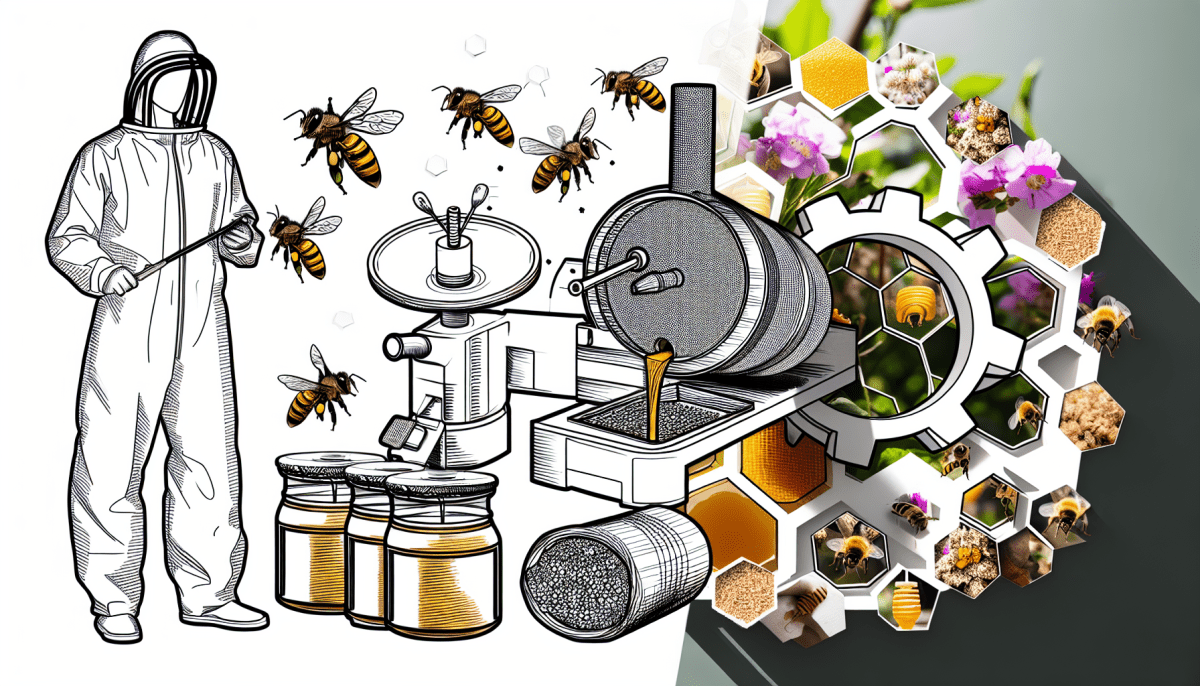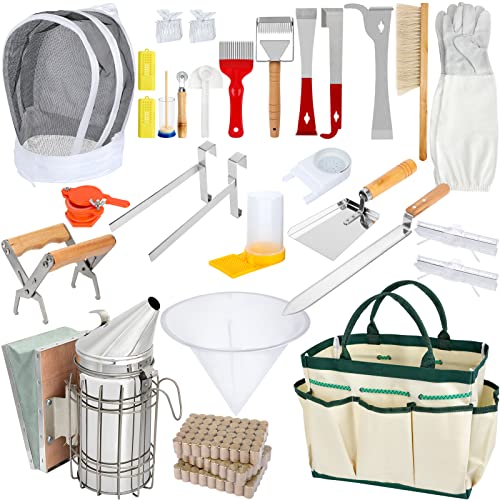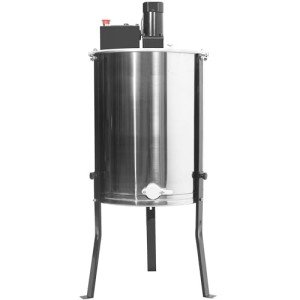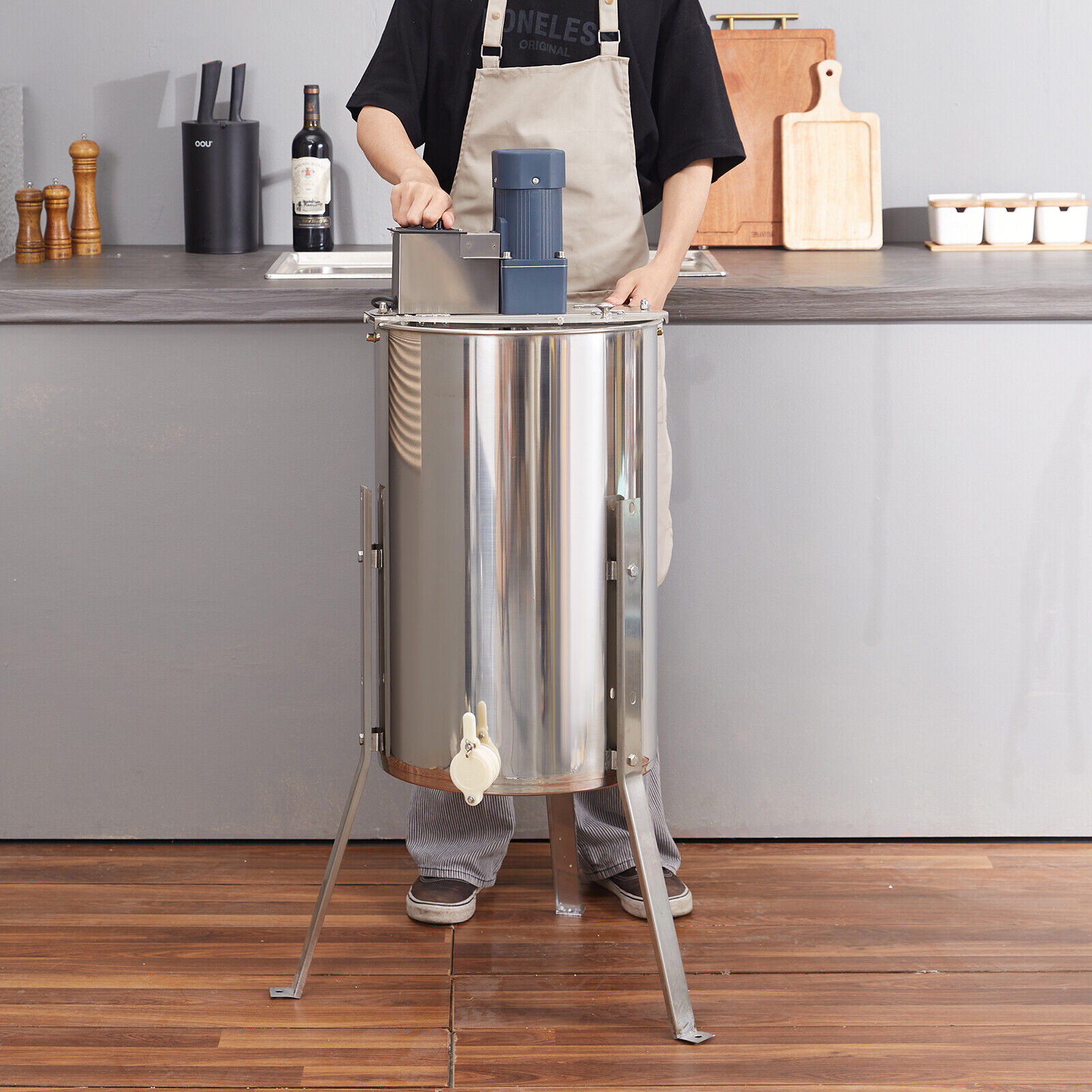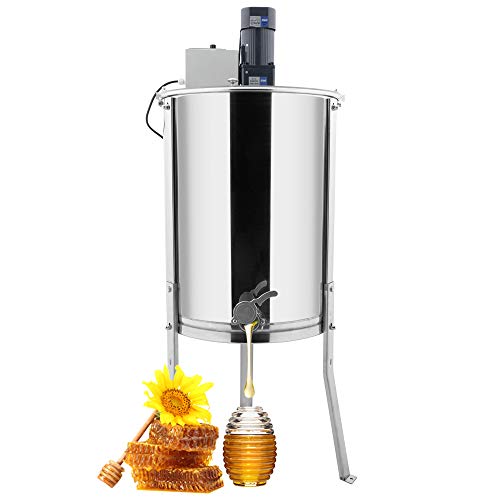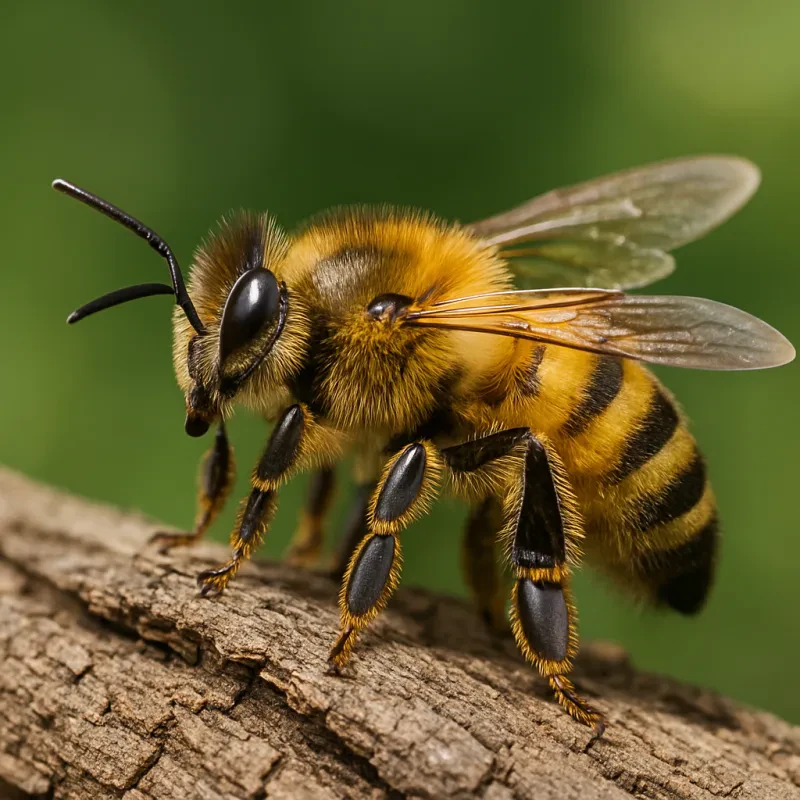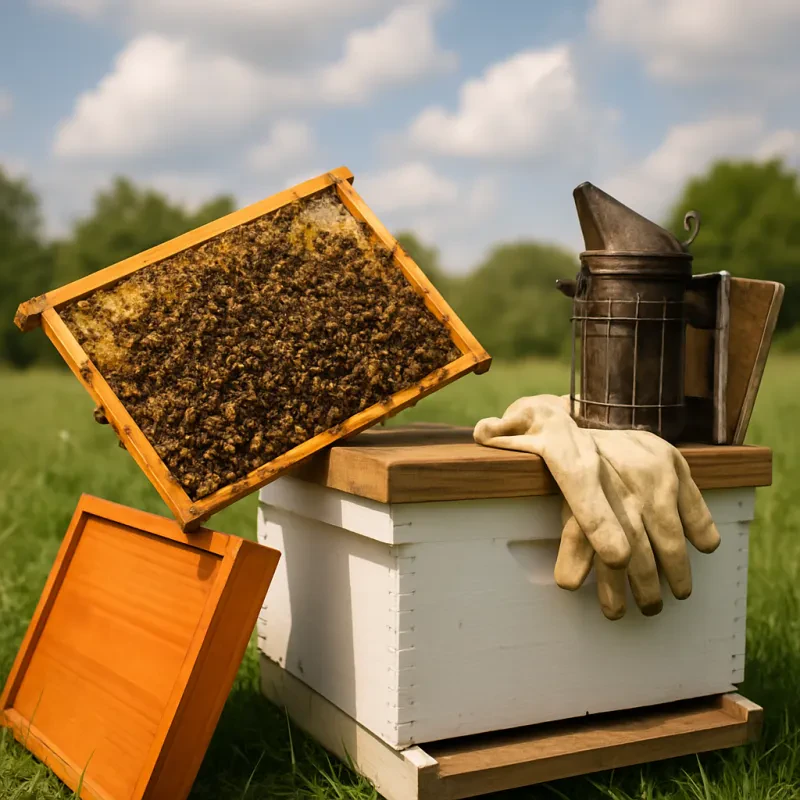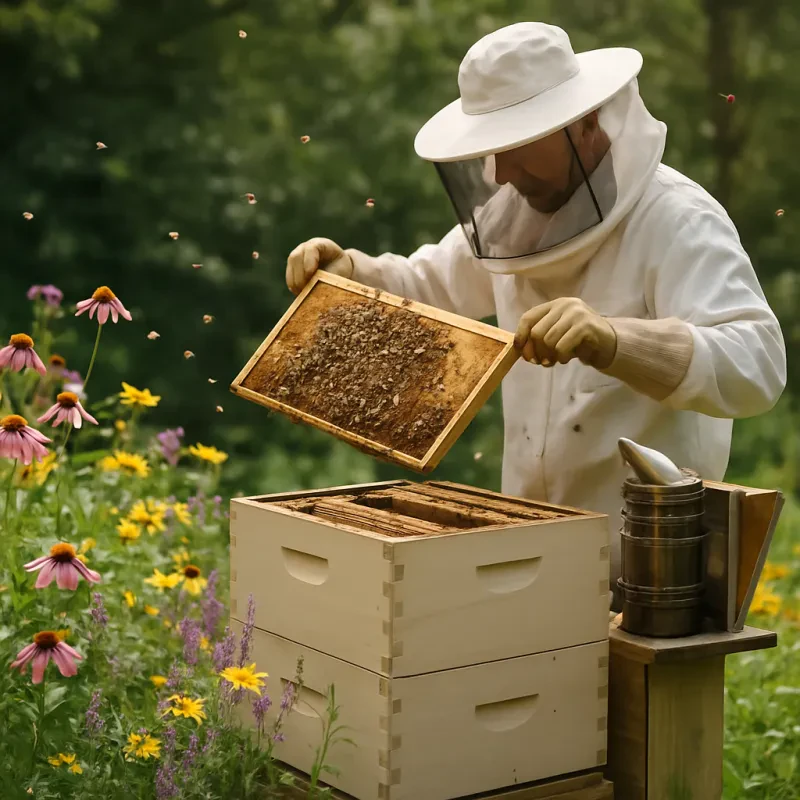$64.99
4.67 out of 5 starsComplete Beekeepers Kit: 30 Tools, Supplies for Beekeeping
The ultimate collection of 30 essential tools and supplies for successful beekeeping
Product information
Product Review Score
Product links
Beekeeping is a rewarding endeavor, not only for the valuable role bees play in our ecosystem but also for the delicious honey they produce. When it comes to harvesting honey, using a honey extractor is an efficient method that ensures you get the most out of your hives while preserving the integrity of the combs. This guide will walk you through the steps of using a honey extractor, from preparation to the final product.
$449.99
4.68 out of 5 stars8 Frame Electric Honey Extractor - Stainless Steel
Effortlessly Extract Honey with our 8-Frame Electric Extractor, Made of Durable Stainless Steel
Product information
Product Review Score
Product links
Step 1: Preparation
Gather Your Equipment: Before you start, ensure you have all the necessary equipment. You'll need a honey extractor, which can be manual or electric, a decapping knife or fork, a strainer, containers for the honey, and protective gear to prevent bee stings.
Choose the Right Time: The best time to extract honey is on a warm day when the majority of the bees are out foraging. Honey flows more easily at warmer temperatures, making the extraction process smoother.
Step 2: Removing Frames from the Hive
Suit Up: Put on your beekeeping suit, gloves, and veil for protection against bee stings.
Smoke the Bees: Gently smoke the hive entrance and under the lid to calm the bees. This makes it easier to remove the frames without agitating the bees too much.
Remove the Frames: Carefully take out the frames filled with honey from the hive. Look for frames that are fully capped with wax, as this indicates the honey is ready for extraction.
Step 3: Uncapping the Honeycomb
Set Up Your Work Area: Place the frames on a stable surface or a specially designed uncapping tank. Have your containers ready to catch the honey.
Uncap the Comb: Using a decapping knife or fork, gently remove the wax caps from both sides of the honeycomb. Electric knives can be used to heat through the wax more easily, but they require some skill to avoid damaging the comb.
Step 4: Loading the Extractor
Place the Frames in the Extractor: Load the uncapped frames into the honey extractor. Most extractors can hold multiple frames at once. Ensure they are balanced to prevent the extractor from moving or tipping during operation.
Step 5: Extracting the Honey
Start the Extraction: If you're using a manual extractor, turn the handle to spin the frames. The centrifugal force will pull the honey out of the combs and onto the sides of the extractor, from where it will drip down to the bottom. An electric extractor works on the same principle but doesn’t require manual labor.
Adjust the Speed Gradually: Begin at a slower speed and gradually increase to prevent the comb from breaking due to the force. The process may take several minutes per batch, depending on the extractor's size and type.
$205.99
$195.69
4.92 out of 5 starsVEVOR Electric Honey Extractor 2/4 Frames - Stainless Steel
Extract Honey with Ease Using our VEVOR Electric Honey Extractor, crafted from durable stainless steel construction and available in 2 or 4 frames option
Product information
Product Review Score
Product links
Step 6: Collecting the Honey
Drain the Honey: Once the extraction process is complete, open the valve at the bottom of the extractor to let the honey flow out. It's advisable to use a strainer or a filter to catch any wax particles or debris as the honey comes out.
Transfer to Containers: Direct the filtered honey into your prepared containers. Glass jars are preferred for long-term storage because they don’t impart any flavors to the honey.
Step 7: Cleanup
Clean the Equipment: Honey extraction can be a sticky process, so cleaning up immediately afterward is essential. Warm water and a mild detergent work well for cleaning the extractor and other tools. Be sure to rinse thoroughly to remove any soap residue.
Handle the Wet Frames: After extraction, the frames will still have a thin layer of honey and wax. These can be returned to the bees for cleaning and refilling, which not only saves the bees considerable work but also encourages them to start refilling the comb more quickly.
Step 8: Storing the Honey
Seal the Containers: Ensure the containers are sealed tightly to prevent moisture from getting in, which can ferment the honey.
Store in a Cool, Dark Place: Honey is best stored in a cool, dark place to preserve its quality and flavor. Properly stored, honey can last indefinitely.
Tips and Best Practices using Honey Extractor
Regularly Check the Frames: During the beekeeping season, regularly check the frames for readiness. Harvesting too early can result in watery honey that may ferment.
Temperature Matters: Warm honey flows more easily. If the honey is too thick or the weather is cool, consider warming the room slightly (up to 95°F or 35°C) to facilitate extraction.
Be Gentle with Bees: Throughout the process, handle the bees and their frames gently to minimize stress and ensure they remain productive.
Maintenance: Regularly check and maintain your honey extractor and other equipment to ensure they are in good working condition for the next harvest.
Put your honey extractor skills into action
Using a honey extractor is an efficient way to harvest honey while preserving the combs for future use by the bees. This guide has walked you through the steps of using a honey extractor, from preparation to storing your honey. Remember, the key to successful honey extraction lies in careful preparation, patience, and respect for the bees. Happy beekeeping and enjoy the sweet rewards of your labor!
$299.99
4.52 out of 5 starsElectric Stainless Steel 4 Frame Honey Extractor
Efficiently Extract Exquisite Honey with our Electric Stainless Steel 4 Frame Honey Extractor
Product information
Product Review Score
Product links
